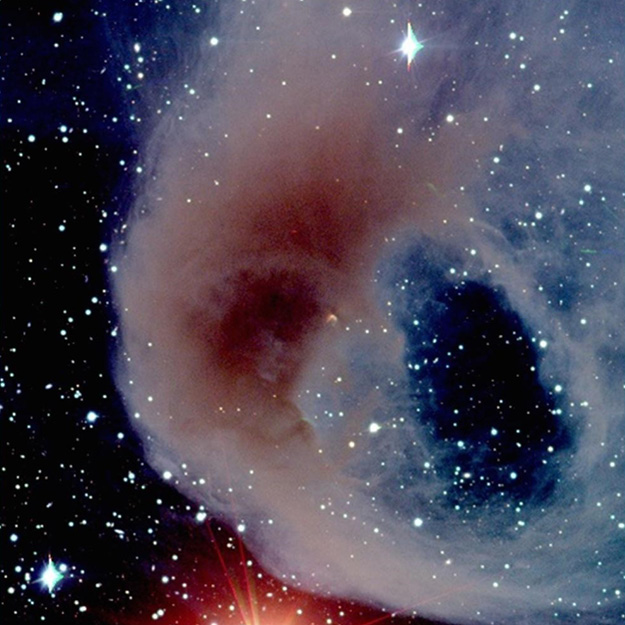Dust and Interstellar Medium
 The dusty material between the stars provides the fuel for star formation and galaxy
growth. At UToledo, we have a long history of studying dust and gas in galaxies, including
our own Milky Way. We use cutting edge tools including infrared, optical, and ultraviolet
spectroscopy, numerical modeling, and even direct laboratory work. Some of us work
directly on the physical underpinnings of interstellar material, for example on properties
of nanoparticles seen through such unexplained phenomena as diffuse interstellar bands,
extended red emission, the anomalous microwave dust emission, the unidentified infrared
emission features, and the UV extinction bump. Others use emission of dust and gas
as tools for understanding the most important processes controlling galaxy evolution, like the feedback of black hole accretion into the interstellar medium, the flow
of starlight and other energy through the gas, and the chemical enrichment history
of heavy elements within galaxies across the Universe. We also use dust and gas to
study the star formation process itself, using the ALMA and VLA radio telescopes to
measure emission from cold dust grains in dark, star forming clouds, while using IR
telescopes, such as the LDT, the Herschel Space Observatory and SOFIA, to detect gas
heated by shock waves around young stars.
The dusty material between the stars provides the fuel for star formation and galaxy
growth. At UToledo, we have a long history of studying dust and gas in galaxies, including
our own Milky Way. We use cutting edge tools including infrared, optical, and ultraviolet
spectroscopy, numerical modeling, and even direct laboratory work. Some of us work
directly on the physical underpinnings of interstellar material, for example on properties
of nanoparticles seen through such unexplained phenomena as diffuse interstellar bands,
extended red emission, the anomalous microwave dust emission, the unidentified infrared
emission features, and the UV extinction bump. Others use emission of dust and gas
as tools for understanding the most important processes controlling galaxy evolution, like the feedback of black hole accretion into the interstellar medium, the flow
of starlight and other energy through the gas, and the chemical enrichment history
of heavy elements within galaxies across the Universe. We also use dust and gas to
study the star formation process itself, using the ALMA and VLA radio telescopes to
measure emission from cold dust grains in dark, star forming clouds, while using IR
telescopes, such as the LDT, the Herschel Space Observatory and SOFIA, to detect gas
heated by shock waves around young stars.
Faculty working in Dust and Interstellar Medium include: Prof. Emeritus Adolf Witt, Prof. J.D. Smith, Prof. Tom Megeath and Prof. Emeritus Steve Federman.


